Qing Ming Observances 2014
0
By Sugen Ramiah
The Qing Ming festival, or tomb sweeping day, is observed by the Chinese worldwide. It is a day for them to pay homage to their ancestors, either by visiting graveyards, columbariams or ancestral tablets in ancestral halls.
The actual day falls either on the 4th ot 5th of April, but families have a window of ten days before or after the actual day to conduct Qing Ming. This year, I was fortunate to have been able to observe Qing Ming in Bukit Brown and other locations.
Qing Ming, has many stories to its origin, but is mainly observed as an act of being filial and for geomancy (feng-shui) reasons. The Chinese believe that the bones of their ancestors and the lives of the descendents are inextricably connected. For abundance in wealth and happiness, firstly, one has to be filial. Secondly, there has to be a good flow of Chi (positive energy) on the forecourts of their ancestors. During the dry season, the foliage clogs the drainage causing an obstruction to the flow of water. During Qing Ming, the drainage is cleared, to allow the flow of water (Chi) onto the forecourt of the tomb. Qing Ming is also a perfect opportunity for extended family members to get together amidst busy work/family commitments.
Descendents set off as early as first light, to wash, sweep, and weed the tombstones. Inscriptions on the headstones are then re-inked using red or gold paint. A stack of coloured paper or a stone is placed on the headstone to signify that the dead is not forgotten. The paper is also scattered on the mound of the grave. This recalls how an emperor from the Han Dynasty in China could not find his parents’ tomb after he returned from war. He was then told to throw five coloured paper into the air and where they lodged, that was the location of his parents’ tomb.
Two sets of offerings are prepared by the families. First set is for the earth deity by the side – a pair of candles are lit, food and incense offered to the Tu Di Gong who is the guardian of the tombstone. Paper money is also burnt as a form of offering.
Second set is for the deceased – a pair of candles are lit, offerings of tea, fruits, favourite food, and longevity cakes are placed on the tombstone altars. Incense sticks are firstly offered to long departed ancestors and subsequently to the deceased. Incense sticks are placed in an urn and sometimes around the mound, and then descendents wait for the deceased to ‘finish’ their meal Sometimes during the wait, incense sticks are offered to neighbouring tombs – recalling the days of the kampong spirit.
Once approval has been given through the moon blocks or coins, offerings of hell notes and silver paper, clothes, shoes and even latest technological gadgets such as the ipads are burnt for the deceased. Sometimes the required items are packed in a paper treasure box, sealed with the name of the ancestor and burnt for them exclusively. To conclude, tea or any form of liquid is poured around the offering to “secure” the area of the burnt offerings, so as to avoid invasion by other wandering spirits.
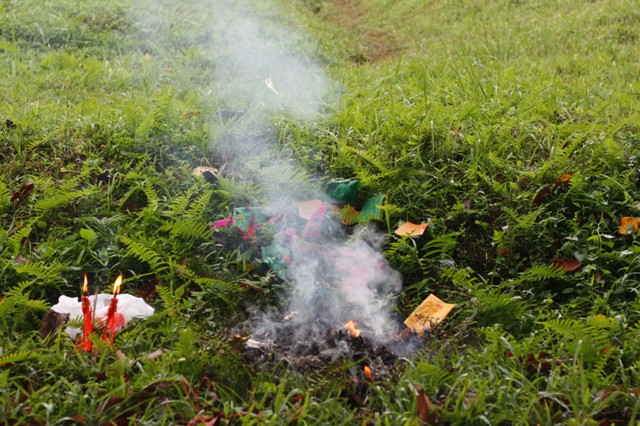
Simple offerings of tea and candy by a woman who comes here yearly to pray for her infant aunt who died during the war. The infant’s burial was not registered so the exact location of plot is unknown.(photo Sugen Ramiah)
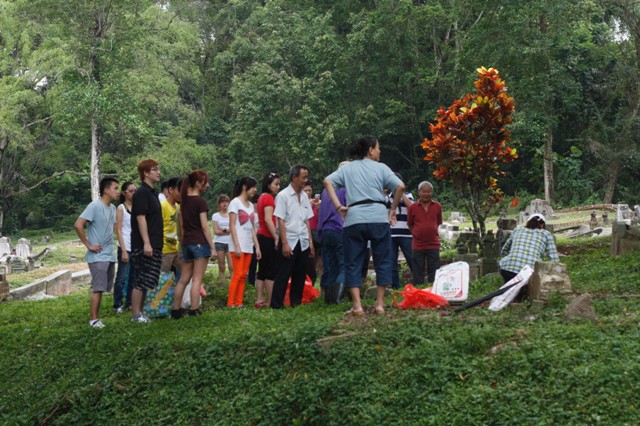
The Ng Family has to charter a bus to transport the entire family for Qing Ming (photo Sugen Ramiah)
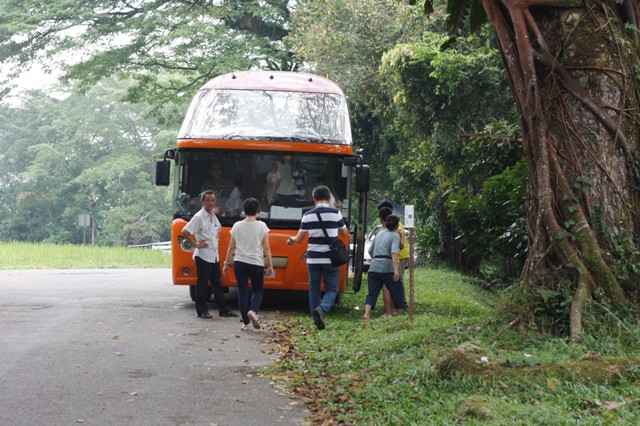
The Ng Family has to charter a bus to transport the entire family for Qing Ming (photo Sugen Ramiah)

A young boy from the Pek Family, who looks forward to Qingming annually, as he gets to visit the tomb of his Lau Yeh (Great grandfather) and meet his cousins. Photo taken at the tomb of his Great Grand Father at Hill 3 (photo Sugen Ramiah)
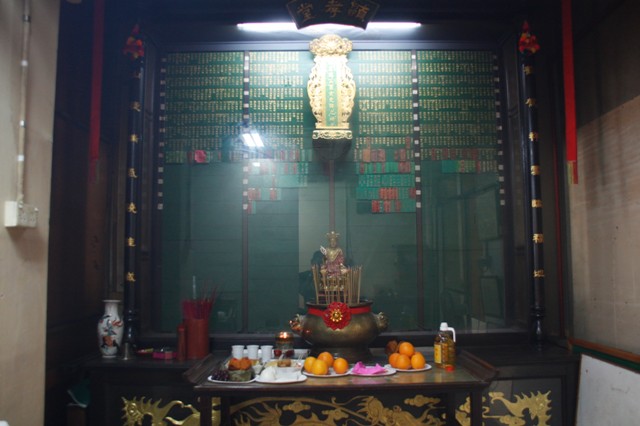
Descendents observing Qing Ming in a less taxing environment at the Cantonese Ancestral Hall of the Singapore Hok San Clan Association (photo Sugen Ramiah)
It has been a rewarding experience, to learn from family members on how they up hold traditions that has been handed down to them. All they hope is that these traditions will be carried on by the generations to come and that their ancestors will not be forgotten. I will close with a quote that is close to my heart.
“To acknowledge our ancestors means we are aware that we did not make ourselves that the line stretches all the way back, perhaps to God; or to Gods. We remember them because it is an easy thing to forget: that we are not the first to suffer, rebel, fight, love and die. The grace with which we embrace life, in spite of the pain, the sorrow, is always a measure of what has gone before. ” – Alice Walker
***
Sugen Ramiah is a teacher by training and his interest includes observing and documenting Chinese festivals and rituals conducted by temples.
Read his blog posts on Salvation for Lost Souls here and here
Read about the tombkeepers’ Qing Ming here
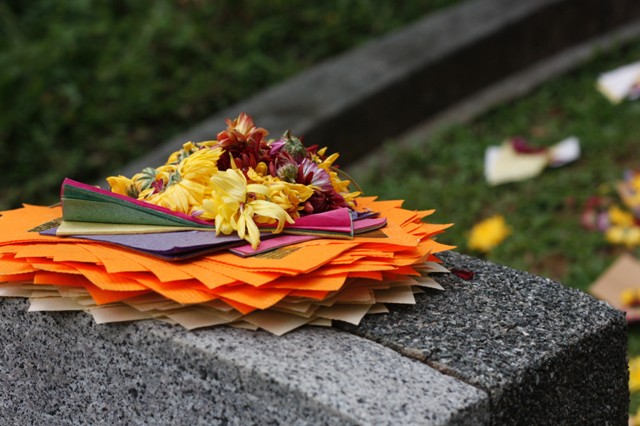
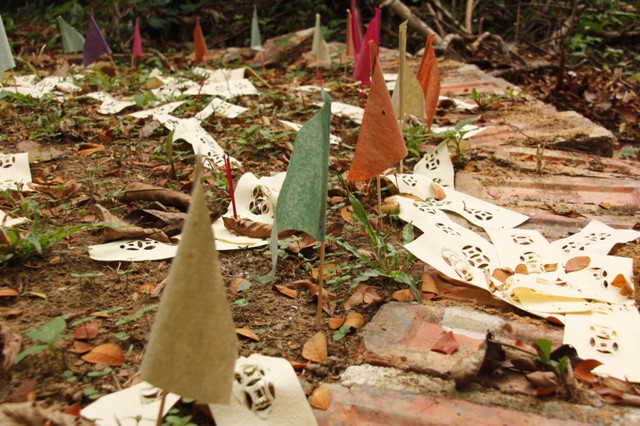
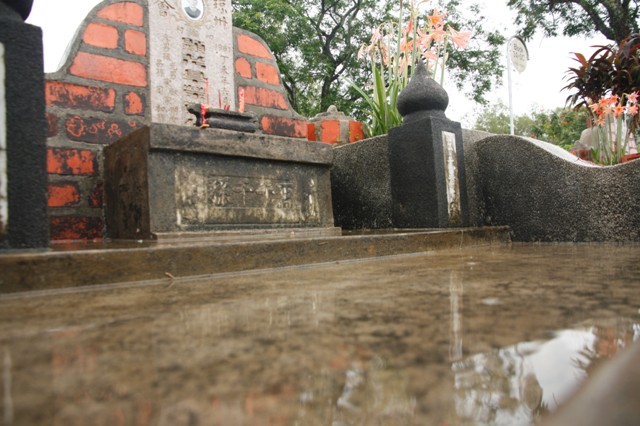
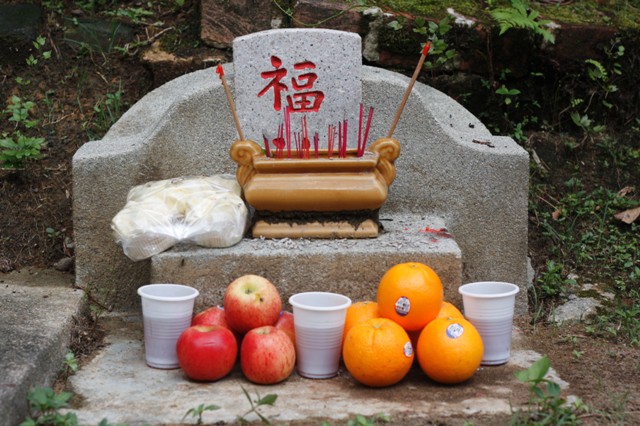

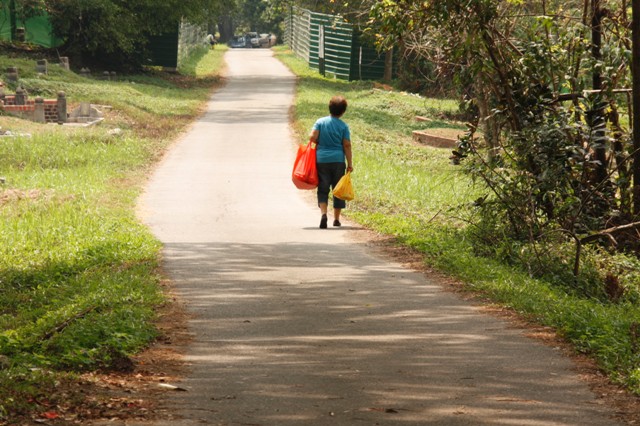
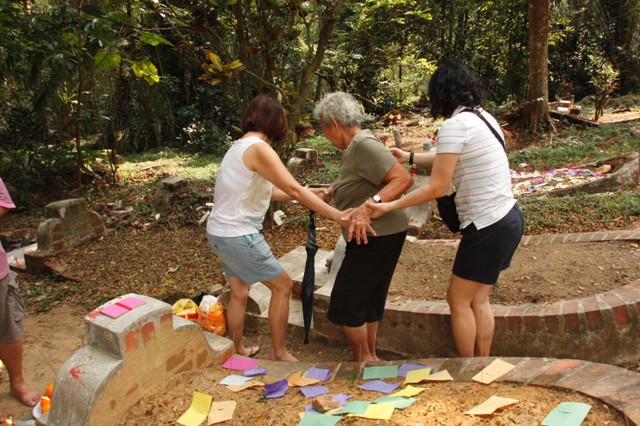
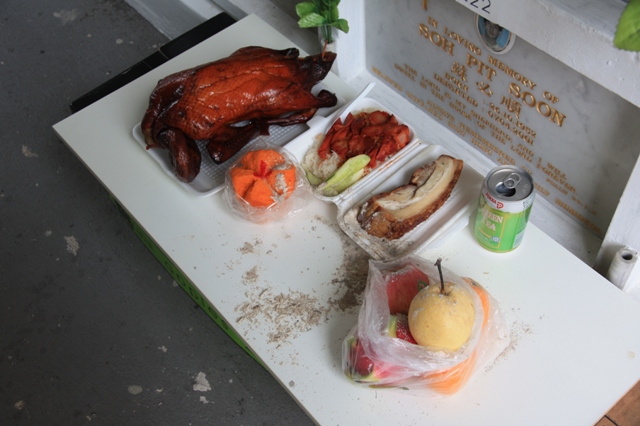
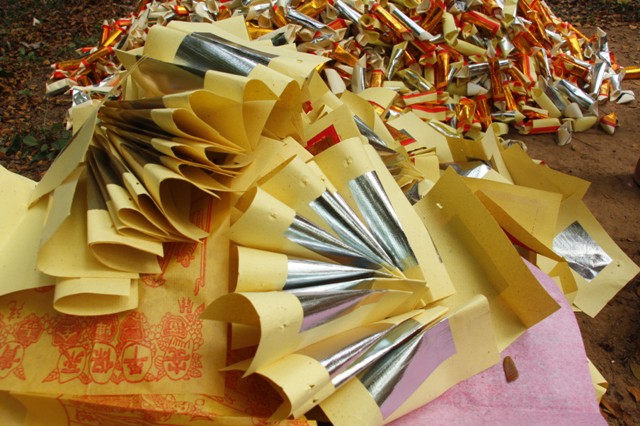

Comments